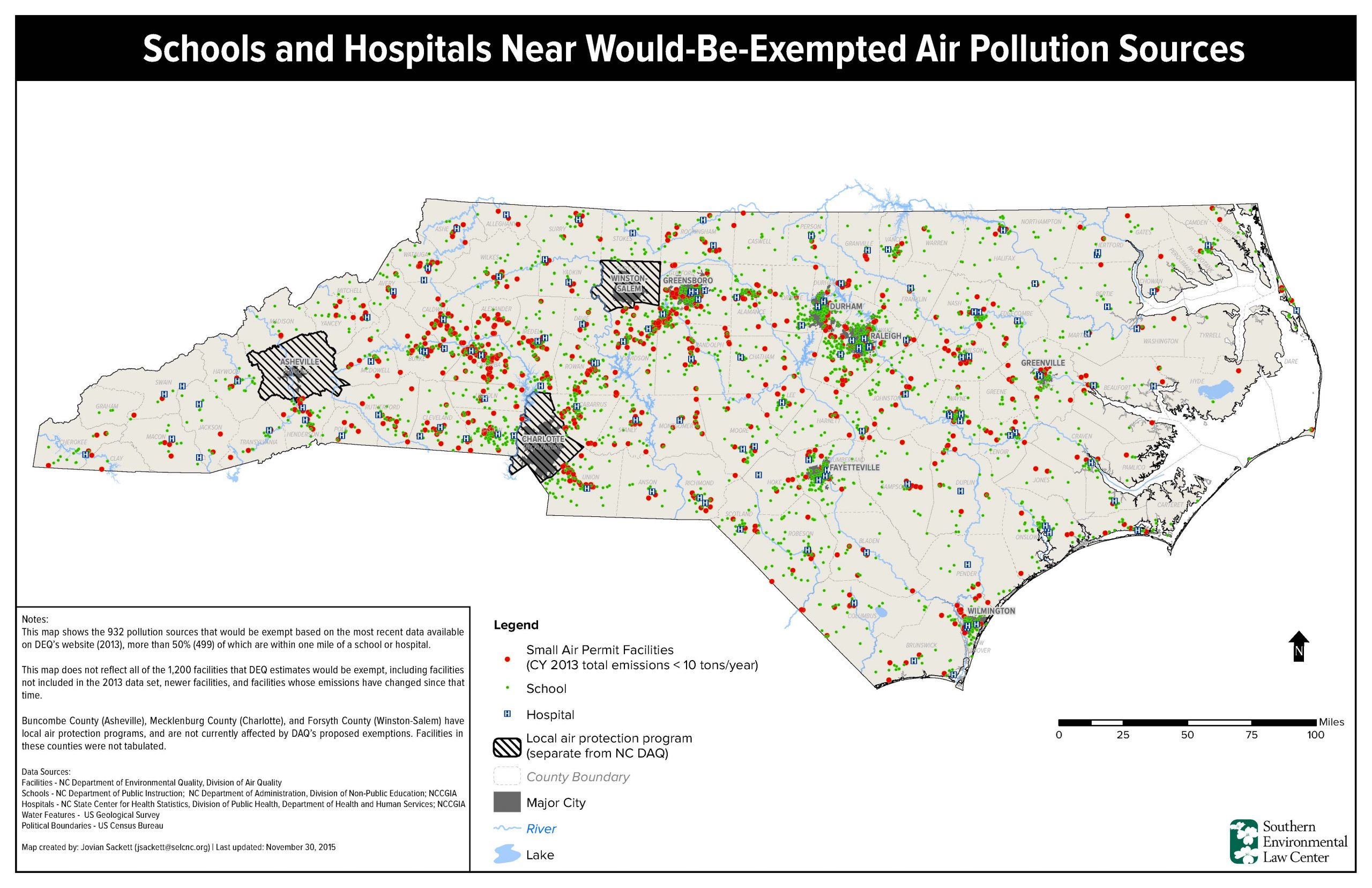State move to exempt toxic air polluters raises cumulative health risks for N.C. families
The North Carolina Department of Environmental Quality (DEQ) proposal to exempt 1,200 emitters of dangerous pollutants from pollution limits and reporting requirements ignores the local and cumulative impacts—including higher cancer risk—from allowing more toxic pollution in North Carolina’s air.
“Instead of protecting the people of North Carolina, DEQ is proposing to increase the risks of cancer and serious illness to children, families, and anyone who breathes in North Carolina for the convenience of polluters, state bureaucrats and politicians,” said SELC Attorney Myra Blake.
Public comment on this proposed change to state policy were due this week and SELC filed concerns with DEQ on behalf of Clean Air Carolina and Medical Advocates for Healthy Air. The state’s proposed changes to existing air quality standards would exempt about 1,200 facilities that emit toxic and pervasive air pollutants from having to comply with the state air quality permitting process. Another 240 facilities would become eligible to register with N.C. DEQ’s Division of Air Quality, rather than having to obtain a permit for their pollution.
These permitting changes would eliminate important public health safeguards at a time when many of North Carolina’s historic air quality protections have been recently dismantled, including eliminating air monitors and health-based limits on toxic air pollution.
Under the proposal, facilities would be exempt from permitting if their annual pollution—including mercury, arsenic, hexavalent chromium, fine particles, and ozone precursors, among others–into the air is up to 10 tons total and up to 5 tons per pollutant. All of the facilities exempted under this proposal also have the potential to emit pollution at levels above the exemption thresholds set out by DEQ because, once these polluters are exempt from permit requirements, they could reduce or cease operating their pollution controls, increasing toxic pollution back above the threshold, without public knowledge.
These exemptions also mean that the people of North Carolina would no longer have access to information about the air pollution in their communities that impacts their health and that of their families. More than 50 percent of these polluters are within one mile of a school or hospital.
The state will now consider submitted comments before releasing its final rule.

